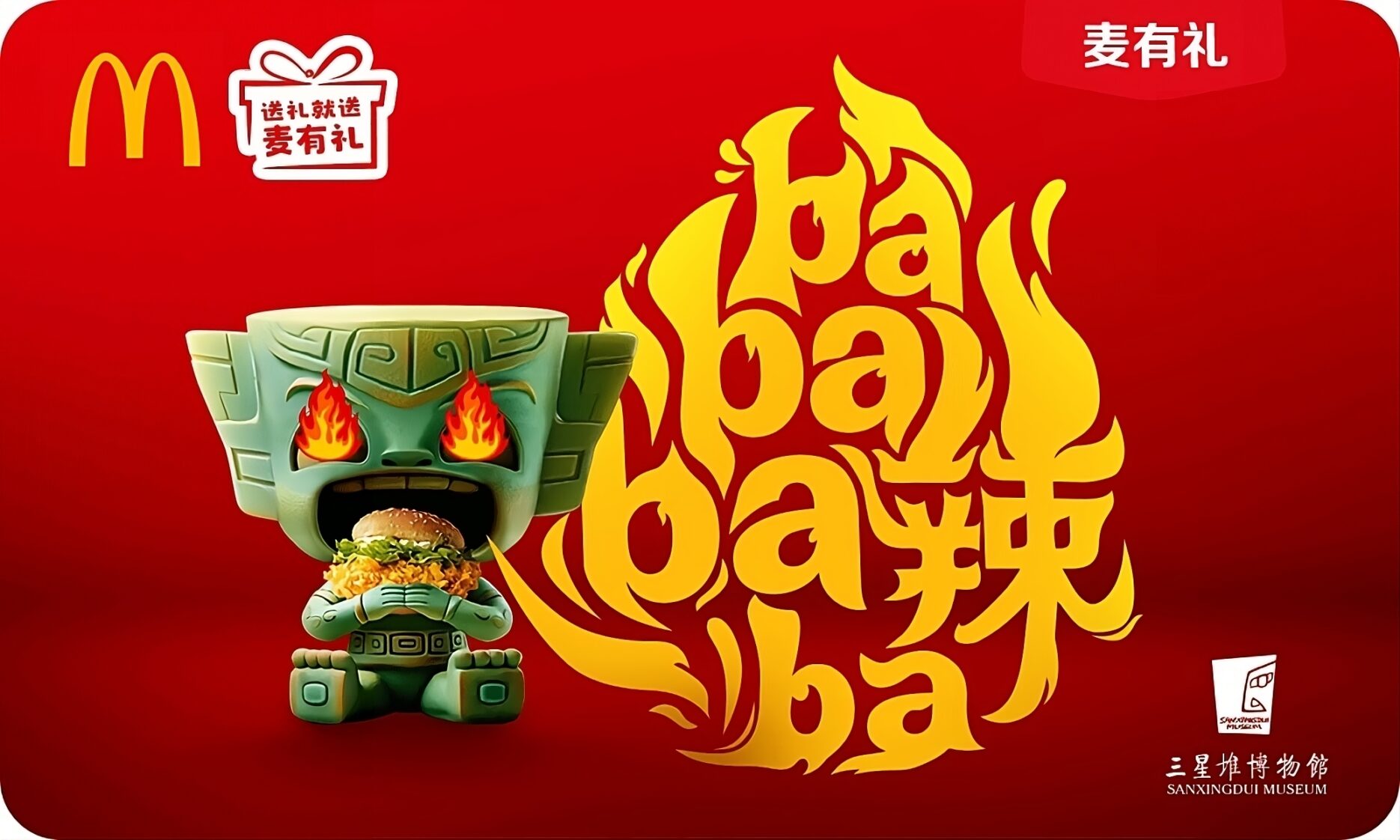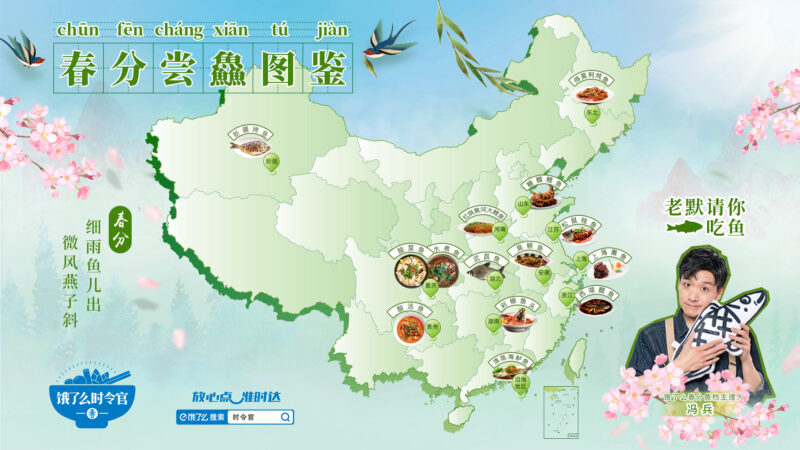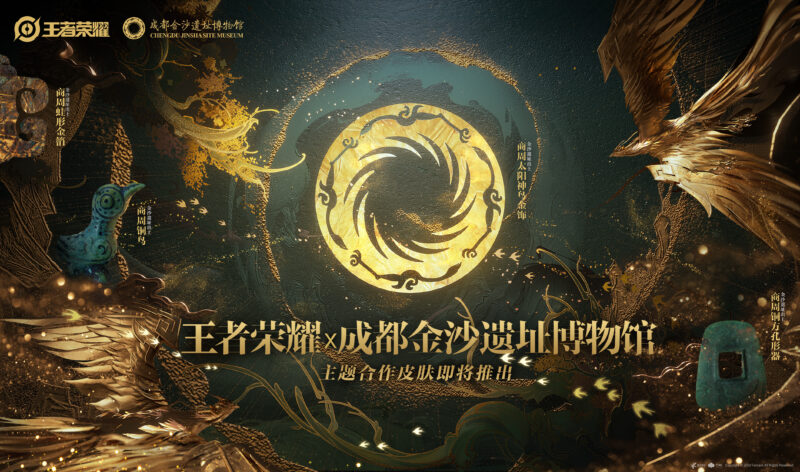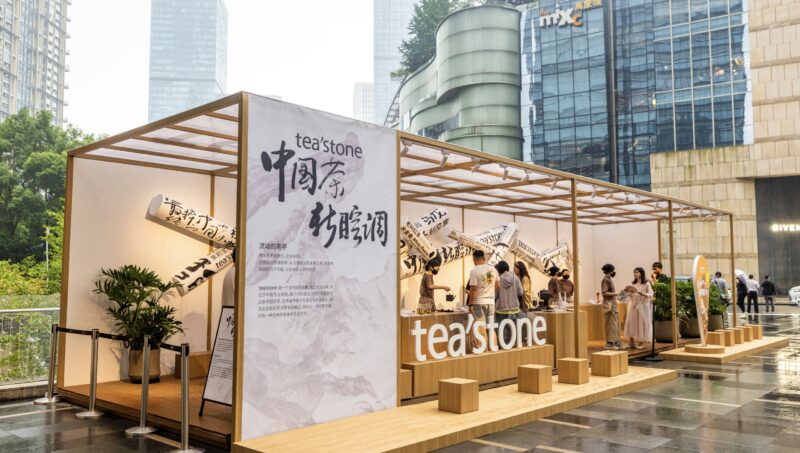Key takeaways:
- McDonald’s launches collaboration burger and packaging with Sanxingdui Museum.
- With a concept restaurant offline and microdrama online, the campaign combines elements of Sichuan cuisine with ancient artefacts and memes.
- International brands have been using collaborations with museums to add to their “guochao” credibility.
As guochao 3.0, spearheaded by the New Chinese Style in fashion, continues to grow, we see many global brands trying to tap into the interest in traditional culture and aesthetics. Like temples, museums, especially that of history or traditional Chinese culture, have been a key element for guochao marketing.
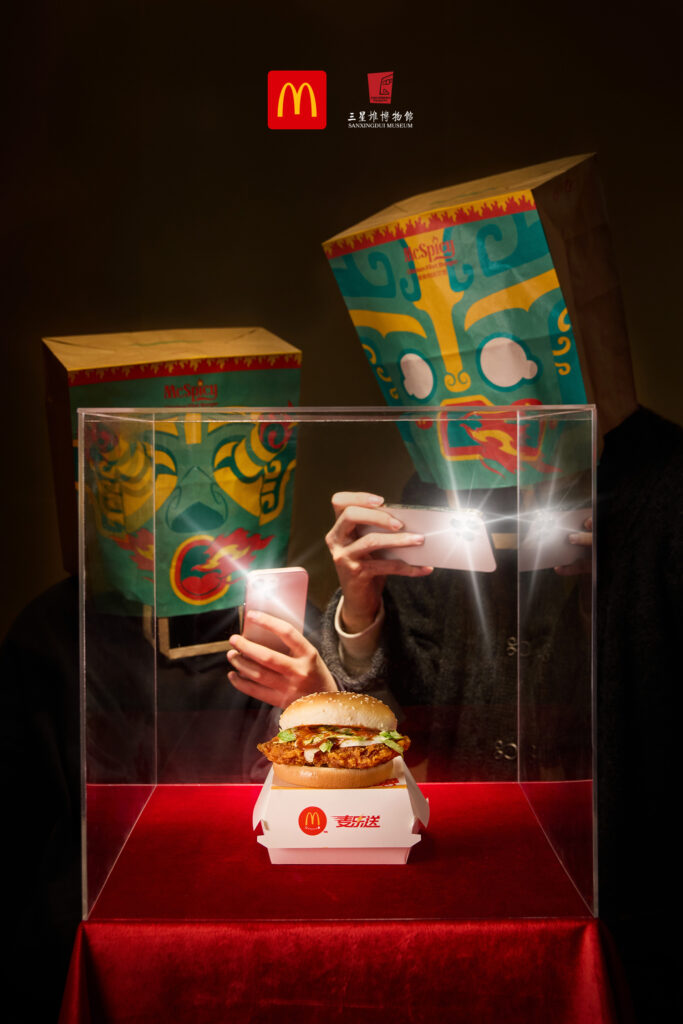
McDonald’s has recently launched a partnership with the Sanxingdui Museum, a historical ruins-turned-museum in Sichuan, with a new flavour of burger and packaging. This can be seen as the international fast-food chain’s exploration of the guochao trend.
McDonald’s goes guochao?
At the end of March, McDonald’s teased that it would launch a collaboration with the Sanxingdui Museum in Guanghan, Sichuan. The collaboration is centred around the McSpicy chicken thigh burger (different from the UK chicken breast version), as Sichuan is known for its hot and spicy food. Not only is the regular McSpicy brought back with exclusive bronze-looking Sanxingdui-themed packaging, a Sichuan-style hot pot flavour has also been added to the menu to add authenticity to the collab. The iconic “Ba da ba ba ba” jingle was also modified to become “ba la ba ba ba” (“吧辣吧吧吧”, with “辣” meaning hot and spicy).
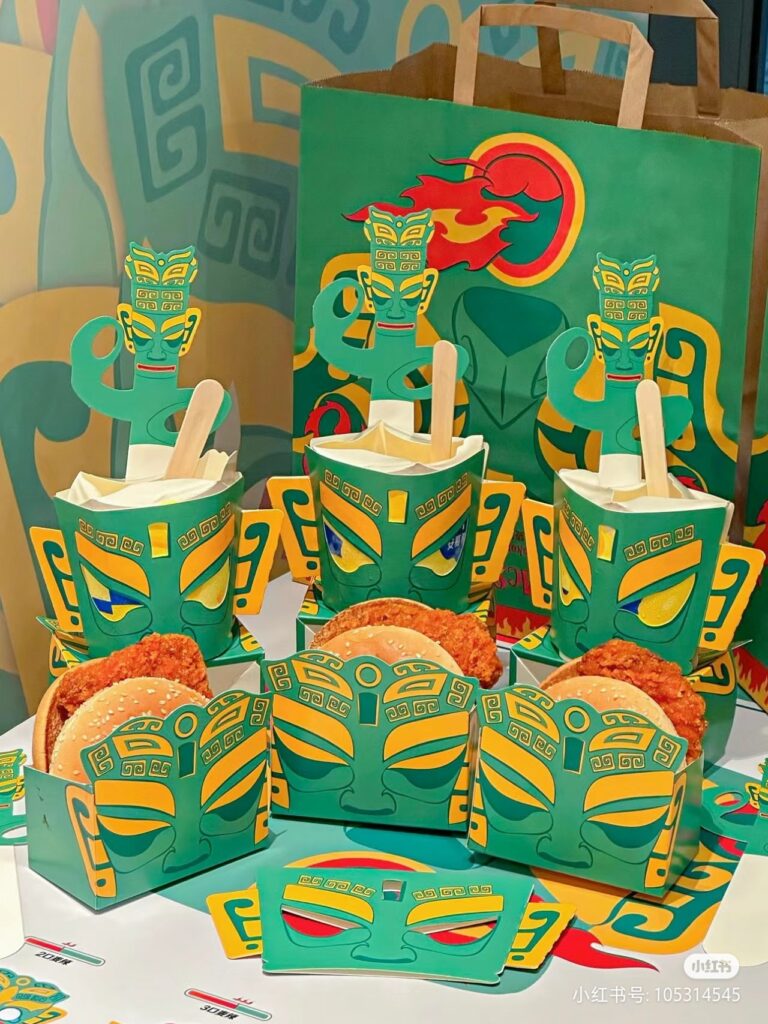
Along with the Sanxingdui Museum, McDonald’s released a couple of microdrama commercials. The fast-food chain invited a makeup artist to create a wearable mask based on the iconic Sanxingdui gold foil mask. The microdrama ads show office workers wearing the mask while enjoying the McSpicy burger at work. One of the episodes gained over 42,000 likes on Douyin, TikTok’s Chinese sister app.
Three stars
Sanxingdui (“三星堆”, lit. Three Star Mount) is the ruins of the ancient Shu civilisation. It is known for its idiosyncratic bronze ware. The museum went through a creative rebranding in 2020, resulting in several collaborations over the years, most recently an online-to-offline collab with the popular video game Genshin Impact.
Before the co-branding campaign with the museum, McDonald’s had already had an association with bronze ware, mostly through meme culture. After a 2002 piece of artwork by Chinese American artist Zhang Hongtu which depicts McDonald’s packaging in the style of Shang-dynasty bronzeware, many took to the web and used AI to create McDonald’s items as ancient artefacts. These memes could be the inspiration for McDonald’s current crossover with the museum.
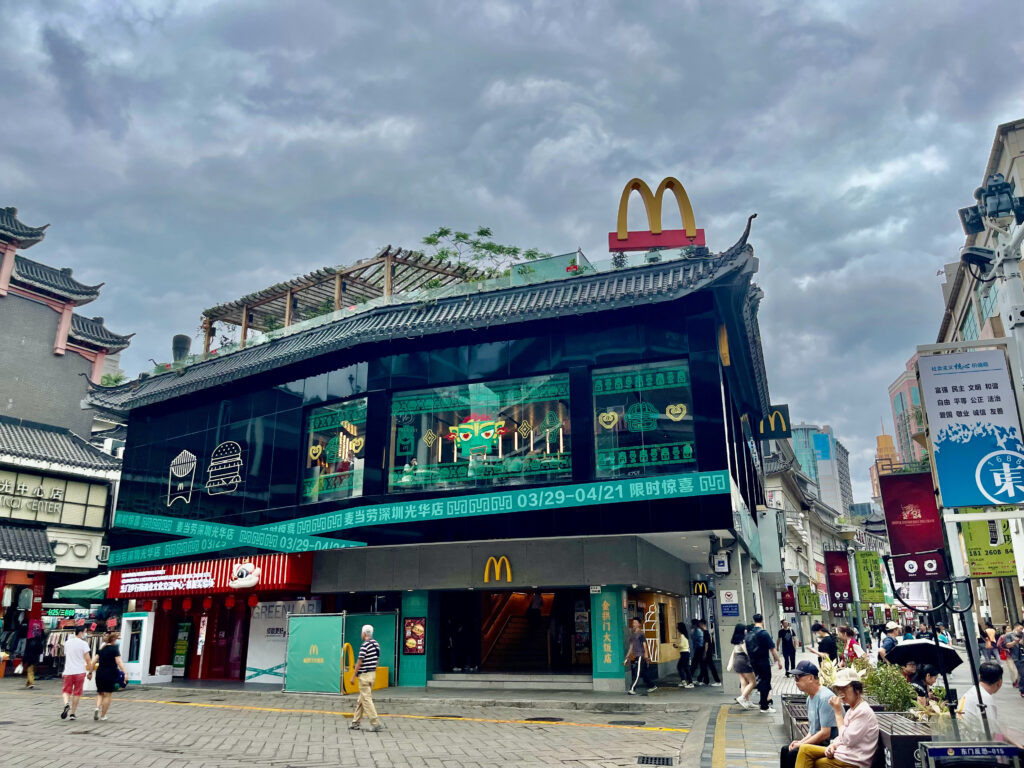
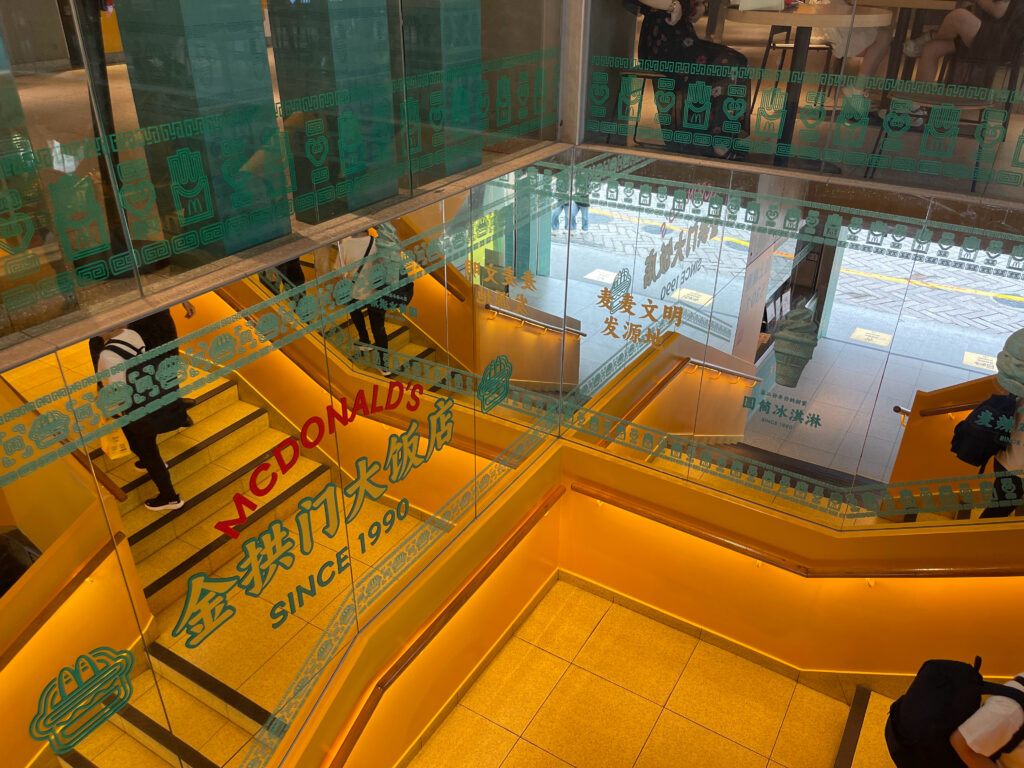
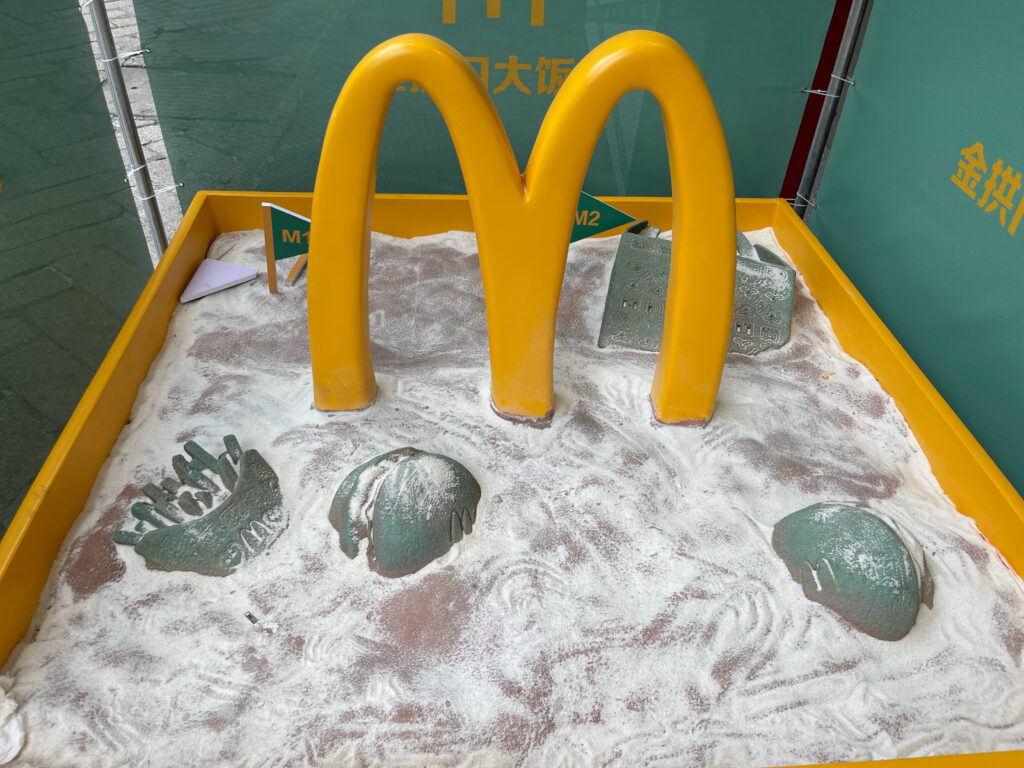

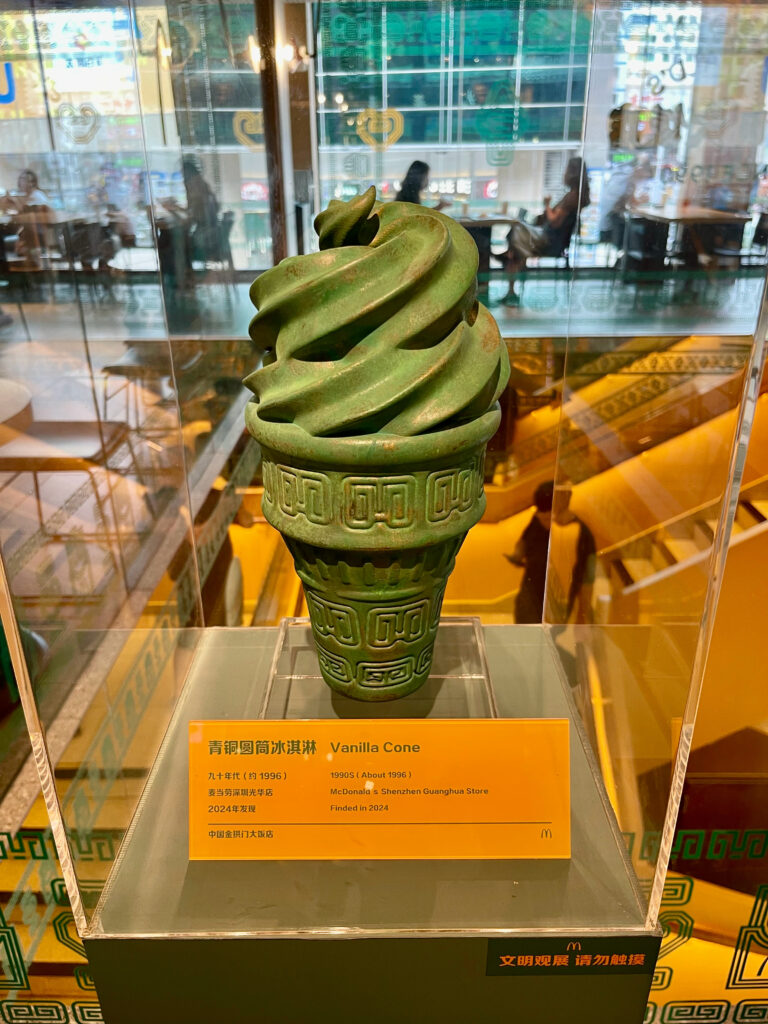
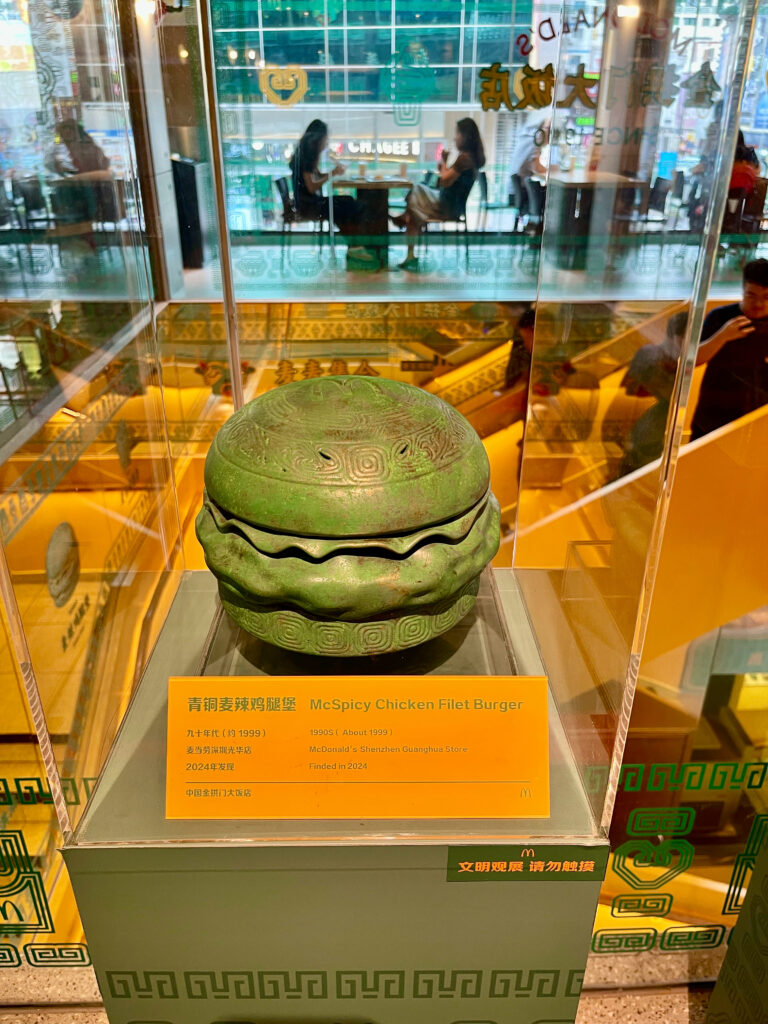
McDonald’s Shenzhen concept store, the Golden Arches Grand Restaurant is fully decked out with bronze and gold colours. The restaurant also holds a “mini-exhibition” of bronze sculptures of classic McDonald’s products like burgers and ice cream cones.
It belongs in a museum!
Museum collaborations, especially with historical museums, have been popular among brands but as part of the “guochao 3.0” trend, as it adds cultural credibility to their “guochao” efforts. It is still not common for international brands. The country of origin fit between partners in a co-branding campaign is a key element, however, sometimes other aspects of fit can make up for it. Starbucks’ collaboration with rural artists in Yunnan successfully launched the coffee chain in the guochao sphere. Other international brands have already experimented with museum collaborations. Interestingly many of the latest examples involve the Palace Museum in Beijing as partners.
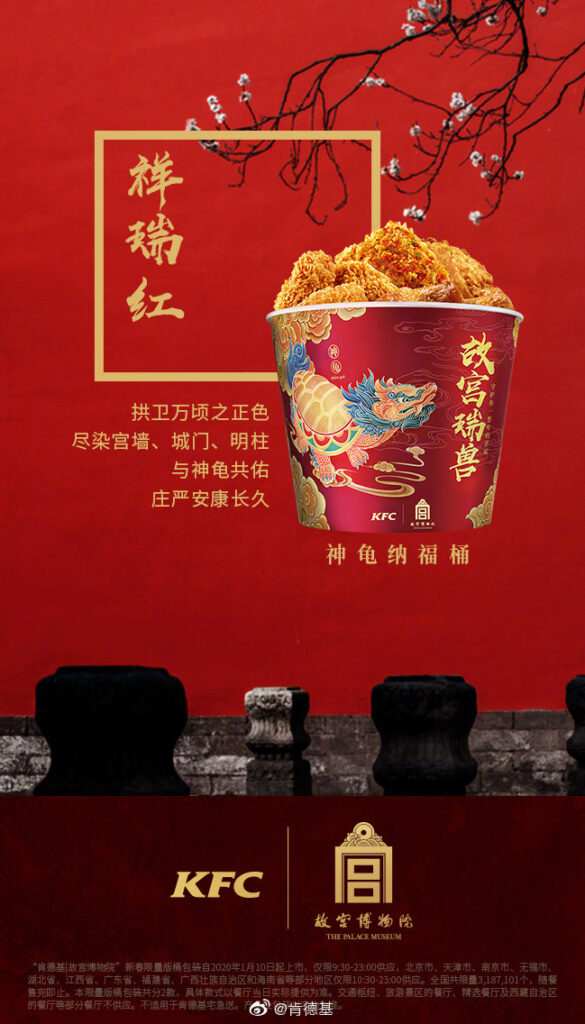
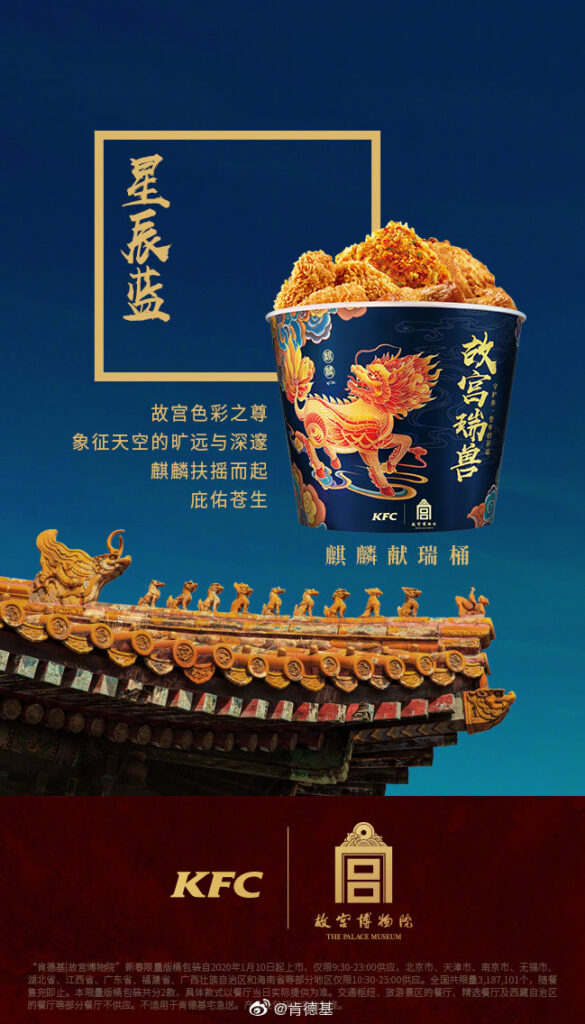
KFC has released multiple Palace Museum collaborations since 2020. For traditional holidays such as Chinese New Year, Lantern Festival, Dragon Boat Festival and Mid-Autumn Festival, the McDonald’s rival has been releasing packaging and merch inspired by artefacts at the museum. Its latest co-branded packaging was from this CNY, based on the handwritten “福” (Fu, fortune, blessing) characters by 4 Qing Dynasty emperors.
This March, crisps maker Lay’s released three flavours based on dishes from the imperial court in partnership with the Palace Museum. In January, Danisa, the Danish butter cookies brand, teamed up with the museum to release dragon-themed packaging for the CNY.
By only incorporating traditional elements in packaging, the brands can leverage the “guochao” elements without changing their products or identity
Both KFC and Danisa utilise special occasions to tap into the traditional Chinese culture, at a time when all brands are expected to release Chinese-styled campaigns. By only incorporating traditional elements in packaging, the brands can leverage the “guochao” elements without changing their products or identity.
Meanwhile, Lay’s and McDonald’s did not rely on traditional festivals. It is possible that the reason was that both brands released new and Chinese-inspired flavours to go with the campaign. It is a deeper integration with the traditional culture and the partners they chose, either the imperial court-turned-museum or a symbol of the Sichuan culture.
Releasing new and Chinese-inspired products is deeper integration with traditional culture
The localised microdrama and play on the meme at the Shenzhen concept restaurant can help McDonald’s find a fit between the brand’s light-hearted image and Sanxingdui’s fun mask image, as Sanxingdui Museum has released creative and playful items before. The collab will hopefully put McDonald’s on the map of guochao marketing and inspire future international brands to capitalise on the trend.




